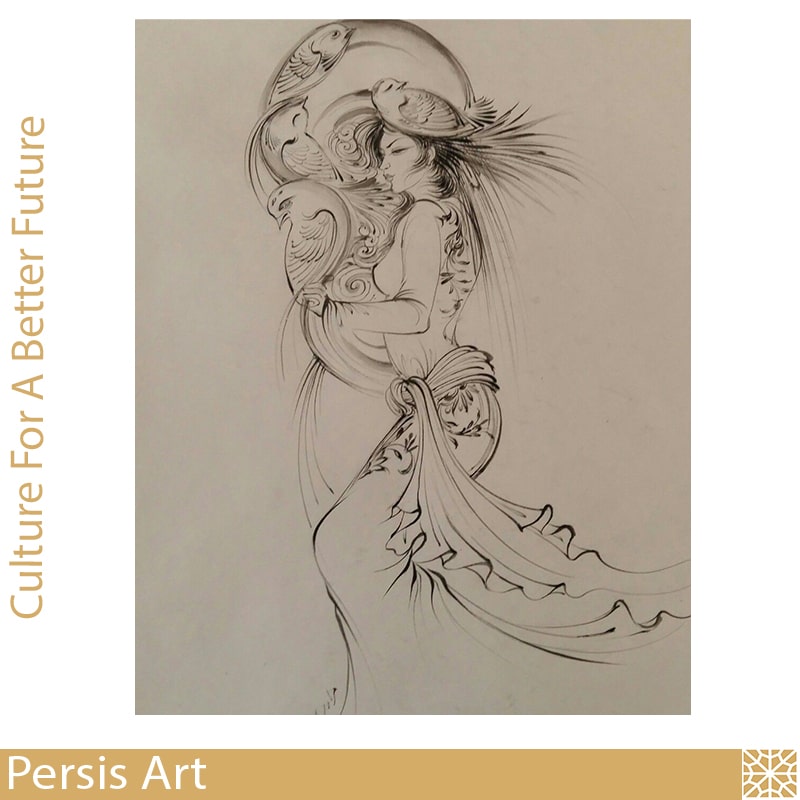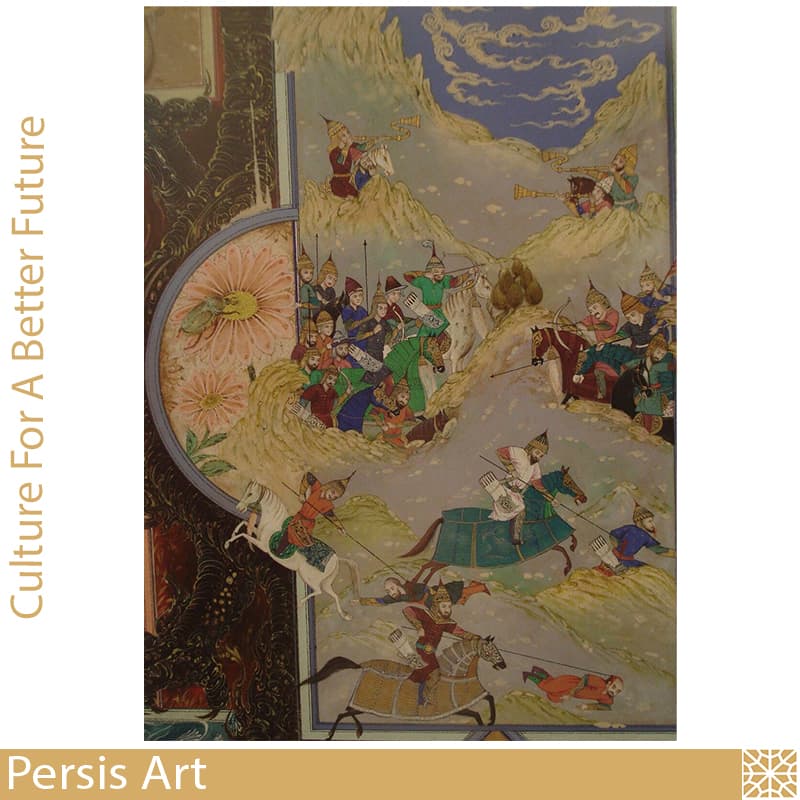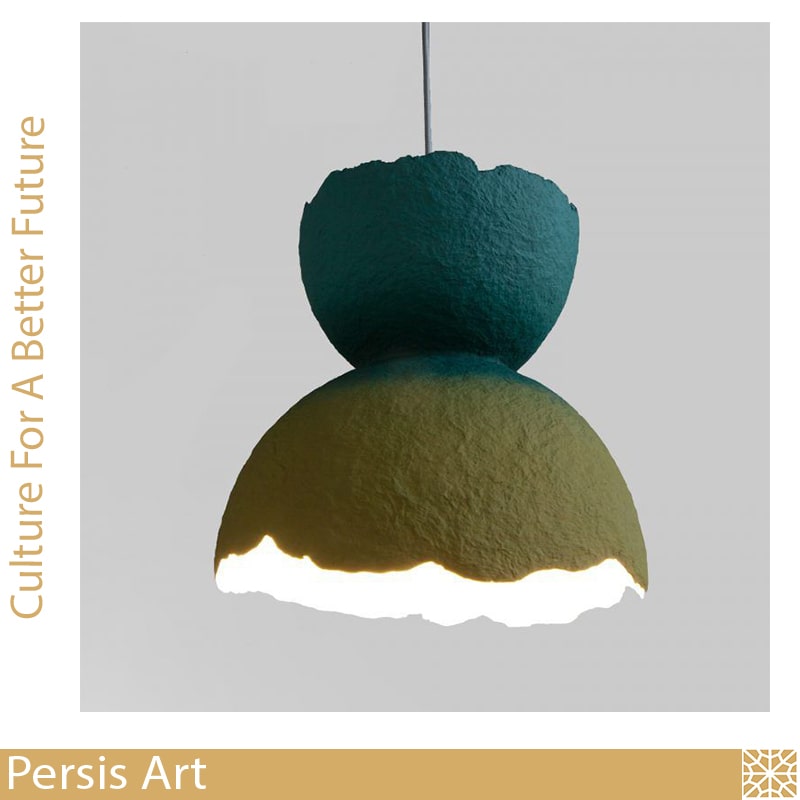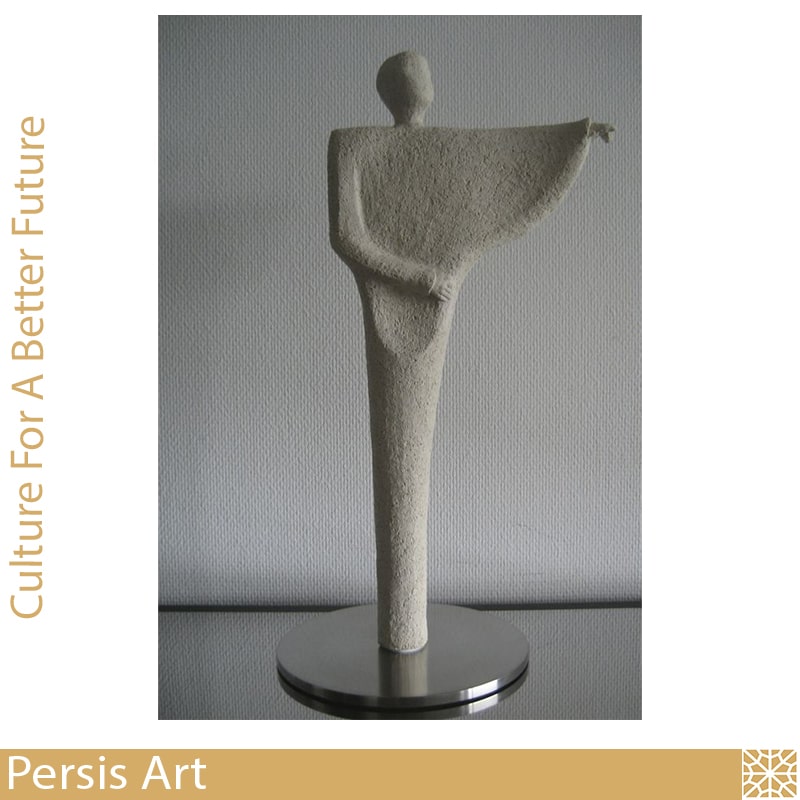Miniature
Miniature or Iranian traditional painting is an artistic process during which a design is created on painting canvas by a paint brush smeared with color. In fact, miniature is a public concept and includes different methods and styles of Iranian painting whether painted in the books and manuscripts or on the wall and door of constructions and other painting canvases.
To perform it, the artist after preparing the surface of work which is very important, paints on the canvas by paint brushes with different sizes then colors it with watercolor. The best paintbrushes are made of cat, squirrel and sable fur which is flexible while it does not curl. After being colored, the painting is polished and details are completed. In the best mode of his work. miniaturist depicts whatever he has imagined. He creates a scene while employing physical objects, expresses material relations in another way.
The world that miniaturist depicts, is the one philosophers called eight heaven or exemplified world The goal of this art is to create a world which is different from ordinary and physical world. The presence of such realm in Iranian painting is possible by the language of code, allegory and imagination and through special methods.
Miniature in Iran has not only long history but also has deeply influenced on all Iranian arts and it is considered as a basic field. The first painting works were seen in Dosheh cave of Lorestan with antiquity of eight to ten thousand years. With the advent of Islam in Iran, miniature was manifested in illustration of books more than any other things. For the first time in the history of Iran, illustration of books was done in the form of workshop and in Robe (four) Rashid Collection which indicated the improvement of miniature in Iran. In different periods, Iranian artists by the aid of their talent and artistic taste made various changes in miniature which resulted in creating many artistic schools in this field like Baghdad, Esfahan, Bokhara Tabriz and Shiraz schools, each school with its own unique features but, on the whole, the most important Iranian feature is the manifestation of dominance of the imaginary world over the concrete objective world.
Among the features of this kind of painting are: omitting perspective, expansion of space from bottom to top, placing the elements in the picture based on spiritual level and material aspects, lack of light source in the scene, usage of brilliant, flat and various colors, not having more than two dimensions, lack of contrast of light and the equal importance of human and nature. In continuation of this trend, new schools and different styles appeared in Iranian painting method but traditional painting with its rich background has still retained its position.
Papier Mache
Papier mache is the art of making box, pen-case, frame, mirror and other decorative objects with delicate and colorful designs which are made of compressed cardboard. In this technique, paper plies and glue are shaped as soft paste with the capability of forming which becomes firm after drying. Papier mache was initiated from Asian countries and used in embossed designs and small religious statues in Europe since 15th century. In the 17th century, this method was used in doll making. Papier mache is a French word which was a replacement of the word oil painting or lacquer painting in Safavid Period concurrent with making cardboard pen-cases. This style of painting on the cardboard body has been prevalent with more or less differences in some of traditional arts of China, India, Iran, and other places.
Read MoreIn Iran, in the late 11th century (AH) papier mache was used particularly in the arts like pen-case painting in Ghazvin and Isfahan. In this artistic style, firm bodies with the capability of painting in watercolor are made of pulp and paper plies smeared with glue and wooden frames; in a way that first tiny pieces of cardboard or newspaper are soaked in water for a few hours and after draining its extra water by a filter, they are mixed with glue and pressed to be changed into a uniform grayish brown paste. The wooden mould which is covered with oily paper and lubricated, step by step, is coated with prepared paste depending on the shape that is to be produced. In the past, soap was used to facilitate the molding process. Having finished each stage, they wait undl the laid layer loses its wetness and becomes a little dry then paste layer is added to it again so that it may reach the desired thickness. Having finished these stages, the layers are beaten and polished with a plece of bone or flat stick and the surface of work is coated with a layer of the tragacanth glaze this is called surface-making.
Colors used in papier mache are usually water-soluble dyes which are used by brush painting and through gilt work and miniature techniques. At the end the surface of the painting is covered for two or three times with a thick layer of Kaman oil that is a mixture of linseed oil and varnish. This is necessary for keeping the body of the work firm and the color stability on it, because of the mentioned lacquer, this art was called under-lacquer painting in the past. Most of objects which are made by this method include cover of valuable books like Koran, mirror frames, different kinds of makeup boxes, jewelry boxes with the shapes of square-hexagon-circle-ellipse and above all, small and big pen-cases. In fact, pen-case making is one of the most important products of papier mache technique because the most precious painting, miniature and gilt work heritages of the past have been performed on pen-case boxes.









